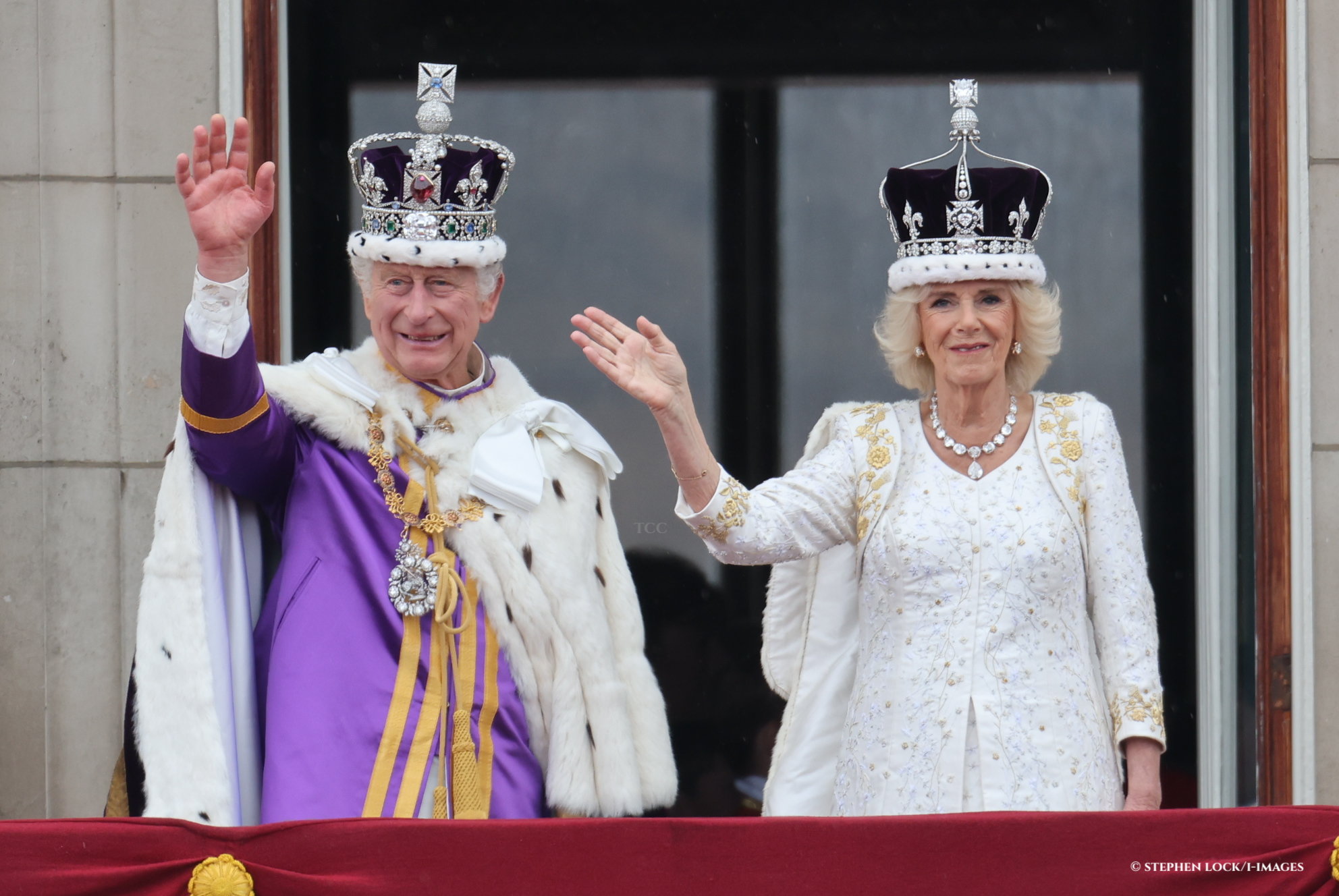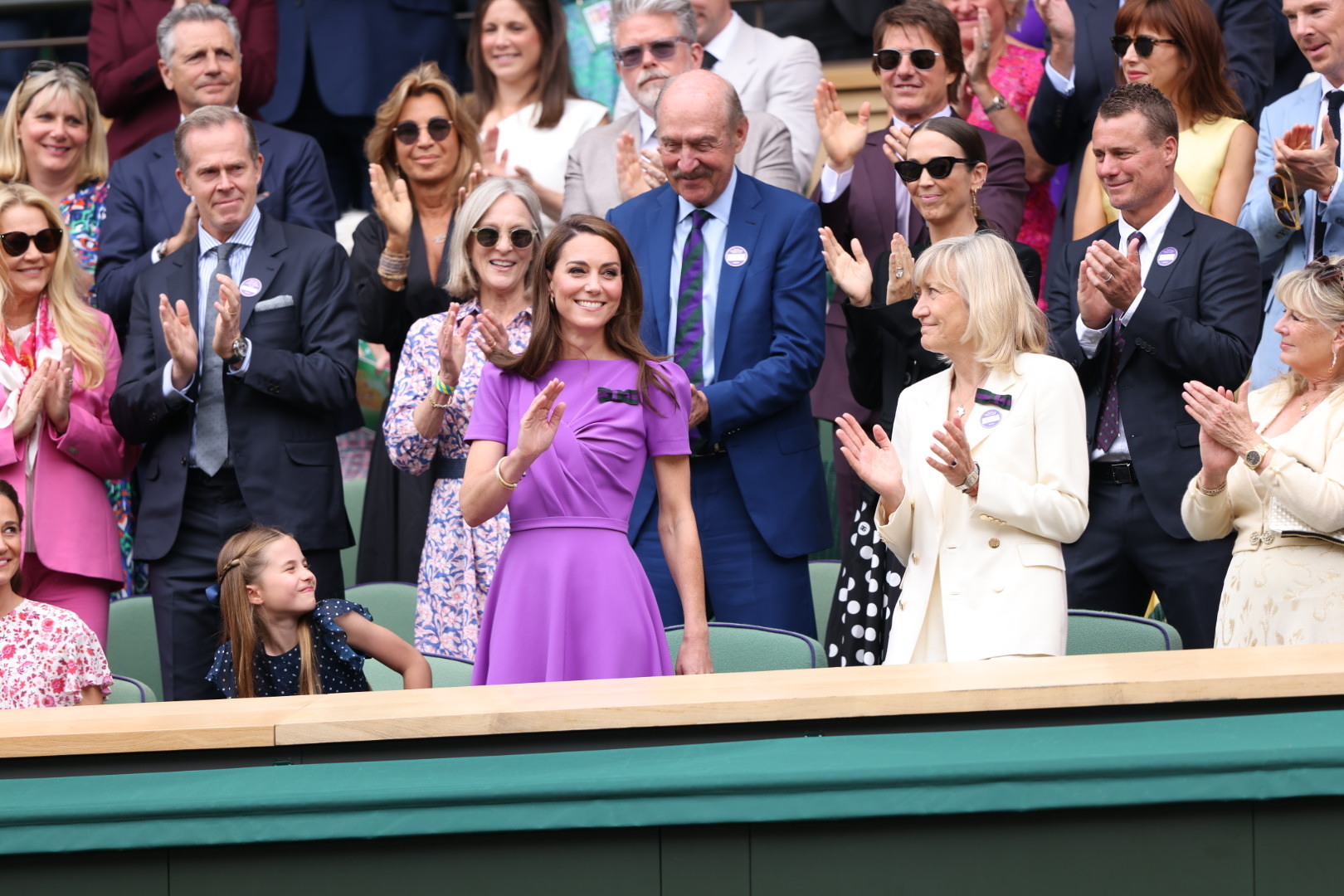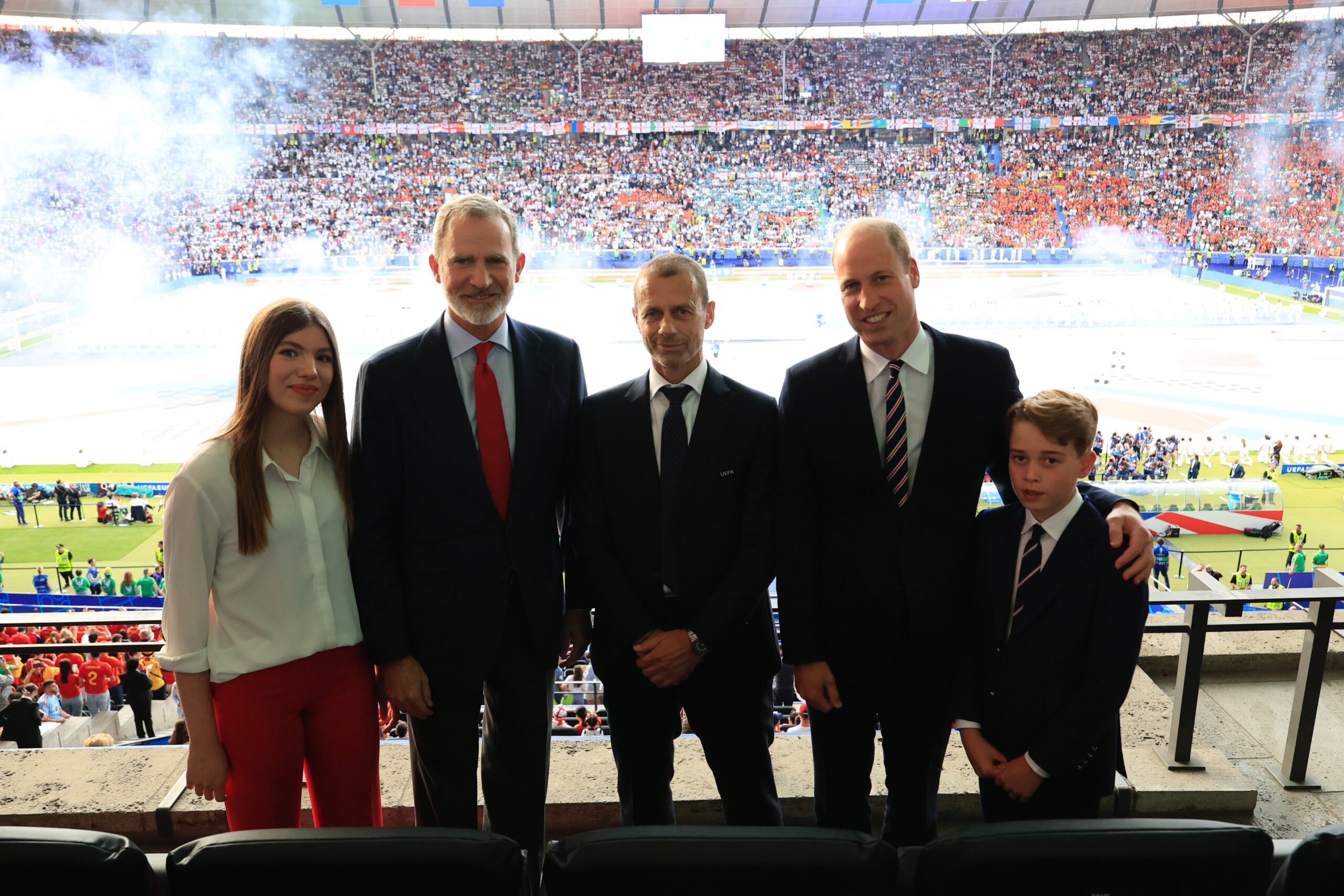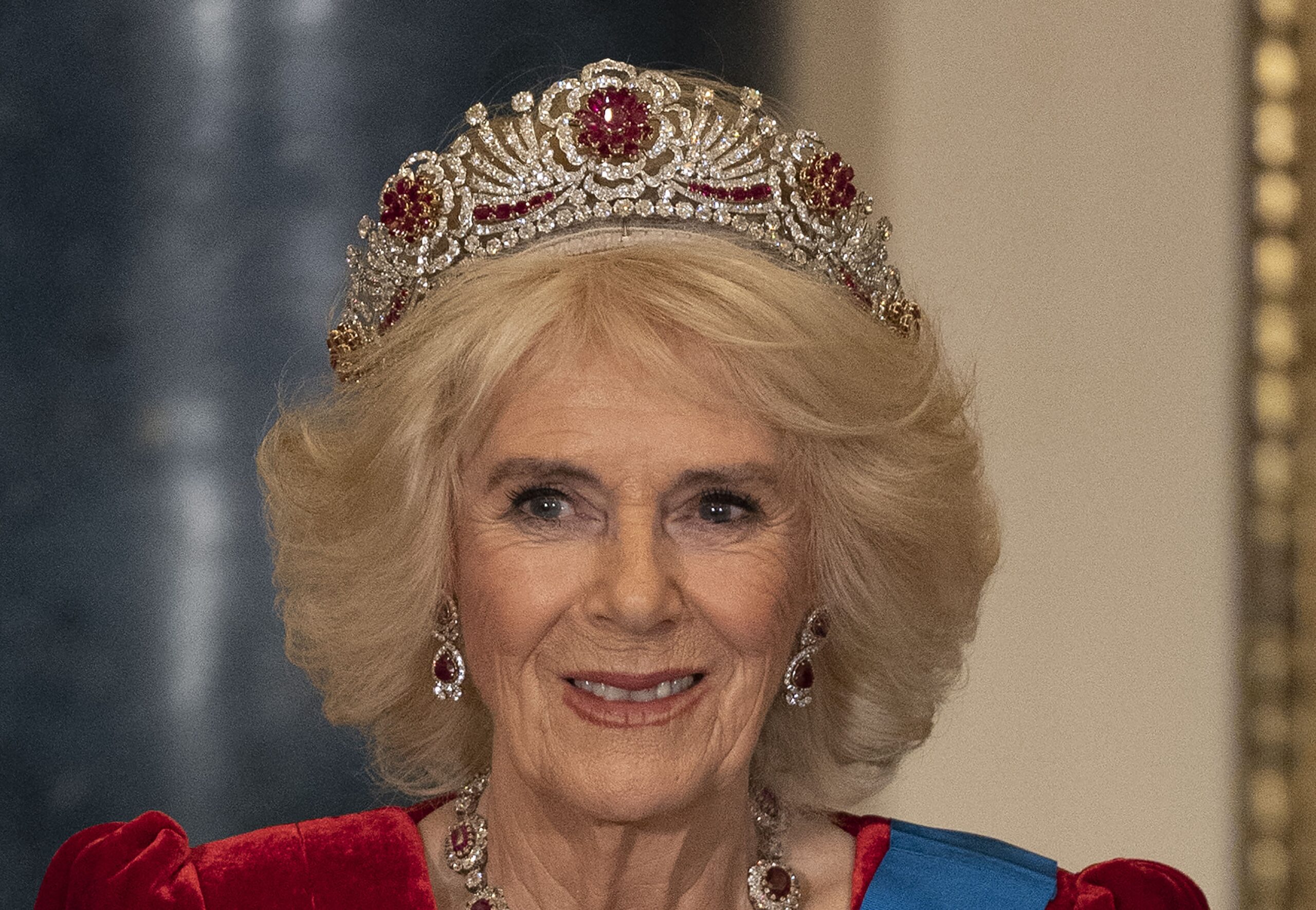The Queen today officially opened Parliament for a new session; in line with the scaled back ceremony, she wore day dress and a hat, with the Imperial State Crown sitting beside her on a table. Here is a little about the crown’s creation, history and significance.
Perhaps one of the most impressive parts of the royal jewel collection, the Imperial State Crown was created from open gold frame by royal jewellers, Garrard & Co., in 1937 for the coronation of George VI. It utilises a very similar design to that of Queen Victoria’s crown.
It is set with a staggering 2868 diamonds and a further 17 sapphires, 11 emeralds and 269 pearls; three other large stones (one diamond, one sapphire and one ruby) are set mounted the frame – a total of 3168 stones. The crown, unsurprisingly, is rather heavy, weighing 1.06kg (roughly 2.3lb) and standing 31.5 cm (12.4 in).
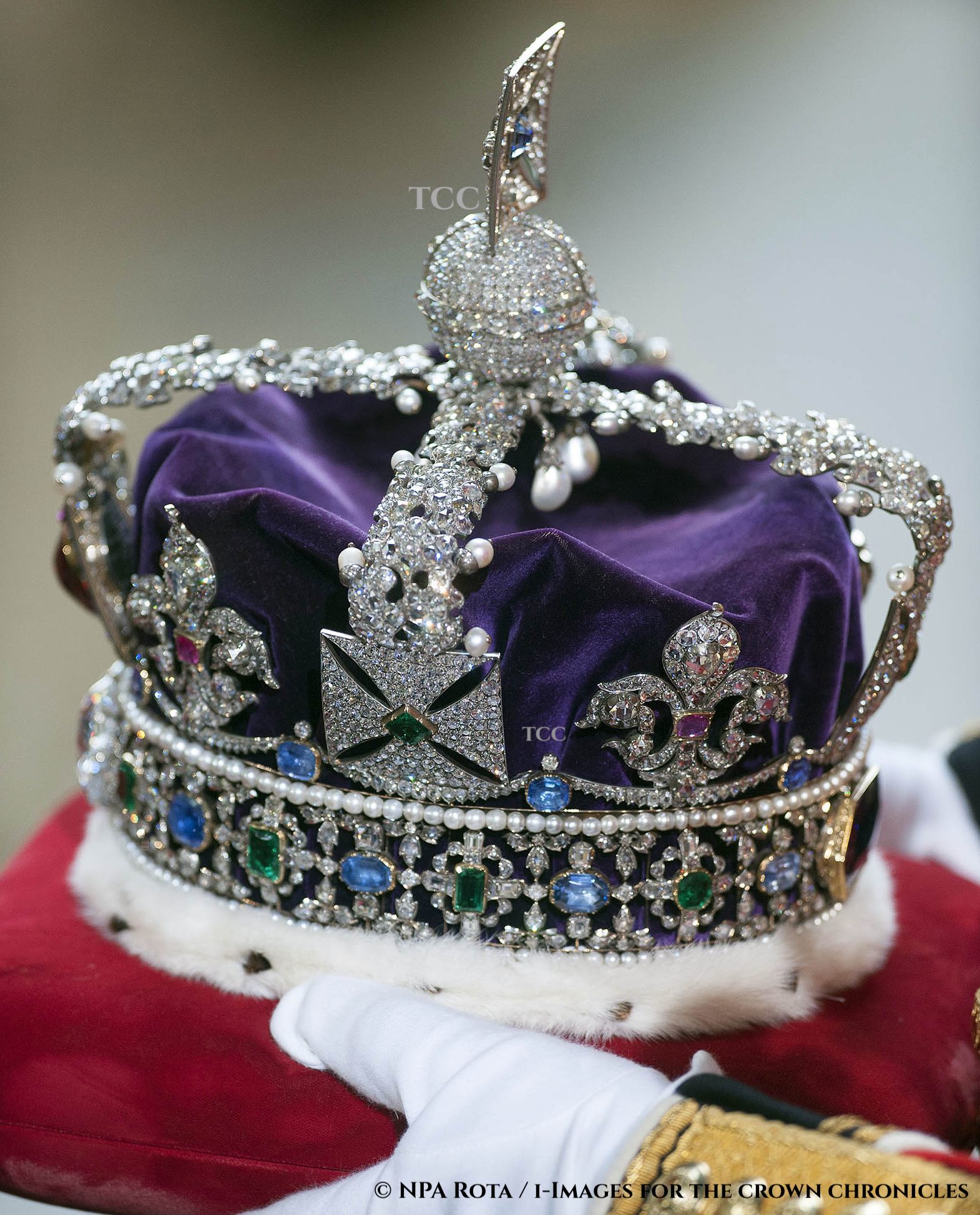
The Imperial State Crown is used at the state opening of Parliament and is a symbol of royal authority
Description
The infamous Cullinan Diamond features in the Imperial State Crown: the second largest stone cleaved, Cullinan II, sits in the very front of the band, with the Black Prince’s Ruby (in fact, a spinel, not a ruby) just above it. At the back of the band is the Stuart Sapphire.
The band holds 16 sapphires and emeralds, which alternate in pattern and are set in open-work frieze of diamonds, between two rows of pearls.

The Queen in the Imperial State Crown for the State Opening of Parliament; it features the Cullinan II in the centre front of the band, the Black Prince’s Ruby above this, the Stuart Sapphire on the centre back of the band, and St Edward’s sapphire (mounted in the cross atop the crown) (UK Parliament/Flickr)
Two arches take the form of oak leaves and acorns, created from diamonds and pearls, to represent the acorns. Oaks and acorns are also considered heavily English symbols.
These cross in the centre, and are connected to the band of the crown with a cross pattee, one of which holds the large spinel. The remaining three crosses are each mounted with emeralds.
Embed from Getty Images Embed from Getty Images
Between these crosses lie four fleurs-de-lis. These, too, are set with a ruby at the centre, and heavily embellished with diamonds.
The crosses and fleurs-de-lis are linked by swags of diamonds (think of hanging bunting) supported on sapphires, at the base.
At the intersection of the arches, there are four large pear-shaped pearls, each with a ‘diamond cap’; these are called ‘Queen Elizabeth’s Earrings’.
Atop the intersection is a ‘monde’ (globe) of silver, decorated all over with brilliant cut diamonds. Another cross-pattée sits above, set with a rose-cut sapphire known as ‘St Edward’s Sapphire’. The sapphire is thought to have belonged to Edward the Confessor, who was one of the last Anglo-Saxon Kings before the Norman Conquest of 1066, as part of a ring.

The Imperial state crown is used at the state Opening of Parliament. Queen Elizabeth’s earrings hang beneath the central mond, above the purple cap.
The Imperial State Crown is fitted with a purple velvet cap – the colour of Royalty – and an ermine band, which also trims the Robes of State.
History and legend of the Imperial State Crown
Made for the coronation of King George VI in 1937, the crown by Garrard closely resembles the Crown of State made for Queen Victoria in 1838 by Rundell, Bridge & Rundell, Crown Jewellers of the time.
The term ‘Imperial State Crown’ dates back to the 15th century; Monarchs had crowns with closed tops, in order to demonstrate that England was not subject to any other earthly power.
The fleur-de-lis
is the French symbol that was adopted by English Monarchs having called themselves King/Queen of France since Edward III in 1337. It is featured heavily in royal heraldry, and was part of the Plantagenet’s coat of arms for centuries.
The Imperial Crown features the
Cullinan II
The Cullinan II diamond, which comes from the infamous Cullinan stone. Famed for its size of 3025 carats – the largest diamond ever discovered – the Cullinan was cleaved in nine parts. It was found in 1905 in South Africa, and gifted to Edward VII in 1907 as a gesture of friendship to heal the rift between Britain and South Africa after the Boer War.
The Black Prince’s Ruby
was thought to have been given to Edward III’s son, known as the Black Prince, by Don Pedro, King of Castile, after the Battle of Najera in 1367; he took it from the King of Granada. It appears that Henry V wore the stone in his helmet at the Battle of Agincourt of 1415.
The stone was sold after the execution of Charles I in 1649, when the Crown Jewels were melted down. It fetched £4.
You may notice a blemish in the spinel: it was once used as a pendant, and so the hole was plugged with a small cabochon ruby in a gold mount.
The Stuart Sapphire
is traditionally thought to have been smuggled out of England by James II in 1688, as the Glorious Revolution took hold. He passed it to his son Prince James, ‘the Old Pretender’, and it eventually came into the collection of Henry, Cardinal York.
George IV sent dealers out to return all Stuart papers, and one came across the stone in the possession of a Venetian merchant. It was then used in Queen Victoria’s state crown.
It was set into the front of the band of Queen Victoria’s State Crown, but then moved to the rear in 1909, after the Cullinan was acquired.
‘Queen Elizabeth’s Earrings’
The four hanging pearls have come to be associated with Catherine de Medici, part of a gift from the Pope for her wedding to Henri II of France in 1553; she gave the pearls to her daughter-in-law, Mary, Queen of Scots, who married de Medici’s eldest son – Francis, the Dauphin.
It is thought the pearls were then sold to Elizabeth I after Mary’s imprisonment, and ended up in the Royal Collection this way, but two of them were probably not around until the 19th century.
On display
Along with the rest of the Crown Jewels (the orb, sceptre – fitted with the Cullinan I diamond – and St Edward’s Crown to name the main pieces) the Imperial State Crown lives at the Tower of London, in the Jewel Tower. Below, you can see the crown under spotlights, its bejewelled frame sparkling.
It is what the Monarch wears to and from their coronation (during it is St Edward’s Crown) and to the State Opening of Parliament.
For the State Opening of Parliament, the crown travels in its own carriage to the Palace of Westminster atop a red velvet cushion. The Queen usually wears the George VI diadem to attend, swapping them around in the Robing Room, where she also dons the Robes of State.

The Imperial State Crown travels alone to the State Opening of Parliament, in a carriage or car (UK Parliament/Flickr)
However, in recent years, she has forgone the crown due to its weight. The Imperial State Crown has instead been seen on a table to the side of thee Monarch during the event.


